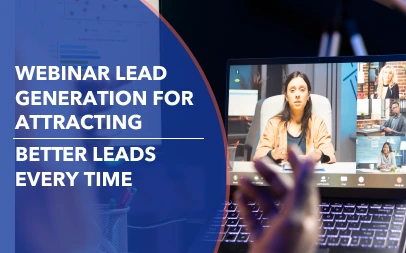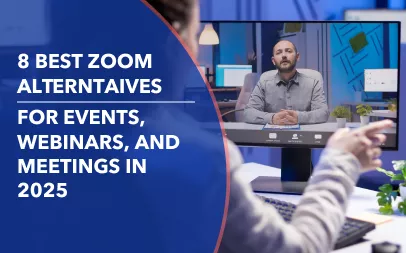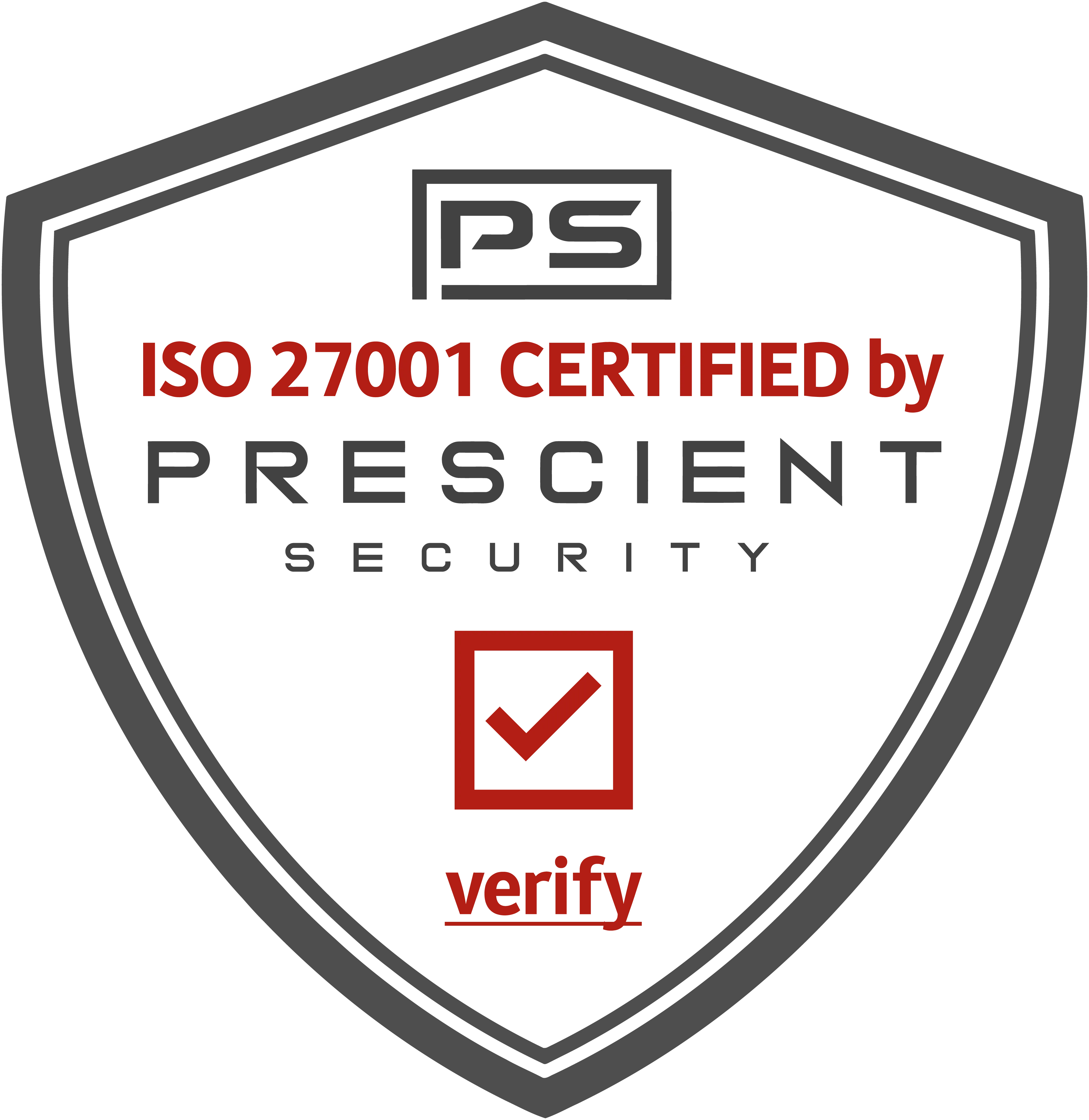
In today's digital age, webinars have become an essential tool for businesses and organizations to connect with their audience. Whether you're looking to educate, inform, or simply engage your audience, choosing the right webinar format is crucial for a successful and impactful event. In this ultimate guide, we will explore the various webinar formats, discuss the factors to consider when choosing one, and delve into the technical aspects that you need to be aware of. So let's dive in and discover the world of webinar formats.
Understanding Webinar Formats
Before we delve into the different types of webinar formats, let's start by understanding what a webinar is. Put simply, a webinar is a live or pre-recorded online event that connects a presenter or multiple speakers with an audience through the internet. It allows for interactive and engaging communication, enabling participants to learn, ask questions, and share ideas.
Webinars have become an integral part of the modern business landscape, providing a platform for organizations to disseminate information, showcase expertise, and connect with their target audience. The convenience of attending and hosting events from anywhere in the world has revolutionized the way businesses and organizations connect with their audience, eliminating geographical barriers and travel costs.
What is a Webinar?
A webinar, short for web seminar, is a powerful tool that has revolutionized the way businesses and organizations connect with their audience. It offers the convenience of attending and hosting events from anywhere in the world, eliminating geographical barriers and travel costs. With the advent of technology, webinars have gained popularity as an effective means of communication, allowing presenters to reach a wider audience and engage with them in real-time.
Webinars provide an immersive experience, combining audio, video, and interactive features to create a virtual environment where participants can learn, collaborate, and network. Whether it's a training session, a product demonstration, or a thought leadership discussion, webinars offer a flexible and engaging platform for sharing knowledge and fostering meaningful connections.
Different Types of Webinar Formats
When it comes to webinar formats, there is no one-size-fits-all approach. Different formats serve different purposes and cater to different audiences. Let's take a closer look at some of the most common webinar formats:
- Single Speaker Format: This format is ideal for educational webinars, where one expert shares valuable insights, knowledge, and expertise with the audience. It allows for a focused and informative session. The single speaker format enables presenters to deliver in-depth content, provide step-by-step guidance, and answer questions in a structured manner.
- Interview Format: In an interview format, a host interviews a guest speaker, fostering a conversation-style webinar. This format is great for showcasing expertise, conducting thought-provoking discussions, and providing different perspectives on a particular topic. The interview format adds a personal touch to the webinar, allowing the audience to gain insights from industry leaders, influencers, and subject matter experts.
- Panel Discussion Format: A panel discussion format brings together multiple experts who engage in a dynamic conversation on a specific topic. This format allows for diverse viewpoints, interactive debates, and a well-rounded understanding of the subject matter. Panel discussions provide a platform for experts to share their experiences, debate different perspectives, and provide a comprehensive analysis of the topic at hand.
- Q&A Format: In a Q&A format webinar, the presenter or panel takes questions from the audience and provides live answers. This interactive format fosters engagement, encourages audience participation, and addresses specific queries or challenges faced by the attendees. The Q&A format allows participants to seek clarification, gain deeper insights, and receive personalized responses, making the webinar more interactive and tailored to their needs.
By offering a variety of webinar formats, organizations can cater to different learning styles, preferences, and objectives. Whether it's a single speaker format for knowledge transfer, an interview format for thought leadership, a panel discussion format for comprehensive insights, or a Q&A format for interactive engagement, webinars provide a versatile platform for effective communication and knowledge sharing.
Factors to Consider When Choosing a Webinar Format
When it comes to choosing the right webinar format, there are several factors to consider. Let's explore three key considerations that will help you make an informed decision.
Your Audience
Your audience plays a pivotal role in determining the most suitable webinar format. Consider their demographic, location, and level of expertise. Are they familiar with webinars? Are they seeking detailed information or looking for an interactive experience? Understanding your audience will guide you in selecting a format that resonates with them.
For example, if your audience consists of tech-savvy individuals who are comfortable with online platforms, you may opt for a more interactive format that encourages participation and discussion. On the other hand, if your audience is less familiar with webinars, you may choose a more structured format that focuses on delivering information in a clear and concise manner.
Furthermore, considering the geographic location of your audience can also influence your choice of format. If you have participants from different time zones, you may want to select a format that allows for flexibility in terms of scheduling and accessibility.
Your Content
The content you plan to deliver is another essential factor. Are you presenting complex information that requires a solo speaker? Or do you have diverse perspectives that can be explored through a panel discussion?
For instance, if you are presenting a technical topic that requires in-depth explanations, a lecture-style format with a single speaker may be the most suitable option. This format allows the speaker to delve into the subject matter and provide detailed insights without interruptions.
On the other hand, if your content involves multiple viewpoints or experiences, a panel discussion format can be more engaging and enriching. This format allows for different perspectives to be presented and encourages a dynamic exchange of ideas among the panelists, creating a more comprehensive understanding for the audience.
Your Goals
Clearly define your goals for hosting a webinar. Are you aiming to educate, generate leads, or build brand awareness? Each format has its own strengths in achieving different objectives.
For instance, if your goal is to establish yourself or your organization as a thought leader in your industry, an interview format can be highly impactful. This format allows you to invite industry experts or influential individuals as guests and engage in insightful conversations that showcase your expertise.
On the other hand, if your primary objective is to engage and build relationships with participants, a Q&A format can be more effective. This format encourages interaction and allows participants to directly ask questions and receive personalized responses, fostering a sense of connection and engagement.
It is important to align your chosen format with your goals to ensure that your webinar delivers the desired outcomes. By considering your audience, content, and goals, you can select a webinar format that maximizes the impact and effectiveness of your message.
In-Depth Look at Various Webinar Formats
Now that we have discussed the factors to consider, let's take an in-depth look at various webinar formats and their specific characteristics.
Single Speaker Format
The single speaker format allows for a focused and uninterrupted presentation by one expert. It is perfect for sharing in-depth knowledge, conducting training sessions, or delivering thought-provoking speeches. This format ensures that the audience receives undivided attention from the speaker, promoting a deep understanding of the topic at hand.
During a single speaker webinar, the expert can delve into the intricacies of the subject matter, providing detailed explanations and examples. This format allows for a comprehensive exploration of the topic, leaving no stone unturned. The presenter can share personal anecdotes, case studies, and real-life examples to illustrate key points and engage the audience on a deeper level.
Moreover, the single speaker format enables the audience to focus solely on the presenter's insights and expertise. Without the distraction of multiple voices, participants can absorb information more effectively and reflect on the concepts being discussed. This format also allows for a seamless flow of ideas, as the speaker can build upon previous points and provide a cohesive narrative.
Interview Format
In an interview format, a host engages in a conversation with a guest speaker or subject matter expert. This format encourages discussion, brings different perspectives to the table, and creates an engaging atmosphere. The interview format is ideal for sharing personal experiences, highlighting success stories, or exploring diverse viewpoints on a particular subject.
During an interview-style webinar, the host can ask thought-provoking questions that elicit insightful responses from the guest speaker. This format allows for a deeper exploration of the topic, as the conversation can flow naturally and organically. Participants can gain valuable insights from the interaction between the host and the guest, as they share their expertise and engage in meaningful dialogue.
Furthermore, the interview format provides an opportunity to showcase different perspectives on the topic at hand. The guest speaker may offer a unique viewpoint or provide alternative solutions, enriching the discussion and broadening participants' understanding. This format also allows for the exploration of personal stories and experiences, creating a relatable and engaging webinar for the audience.
Panel Discussion Format
A panel discussion format gathers a group of experts who engage in a dynamic conversation on a specific topic. This format offers a platform for in-depth discussions, encourages multiple viewpoints, and facilitates the exchange of ideas among panelists. The panel discussion format is effective in creating a well-rounded understanding of complex issues and fostering interactive debates.
During a panel discussion webinar, each panelist brings their unique expertise and perspective to the table. The interaction between the panelists allows for a comprehensive exploration of the topic, as they can build upon and challenge each other's ideas. This format encourages participants to critically think about the subject matter and consider different viewpoints.
Moreover, the panel discussion format promotes interactive engagement with the audience. Participants can submit questions or comments, which the panelists can address during the webinar. This two-way communication fosters a sense of inclusivity and involvement, as attendees can actively contribute to the discussion and have their queries answered by experts.
Q&A Format
The Q&A format invites the audience to ask questions, and the presenter or panelists respond in real-time. This format fosters engagement, provides tailored answers to specific queries, and allows participants to actively participate in the webinar. The Q&A format is excellent for building connections with the audience, addressing concerns, and encouraging active learning.
During a Q&A session, participants have the opportunity to seek clarification, expand on certain points, or delve deeper into specific aspects of the topic. The presenter or panelists can provide tailored answers, ensuring that the audience's queries are addressed effectively. This format allows for a personalized experience, as participants can actively shape the direction of the webinar through their questions.
Furthermore, the Q&A format encourages active learning and engagement. Participants may learn from the questions asked by their peers and gain new insights from the answers provided. This interactive element fosters a sense of community and collaboration, as participants can learn from each other's perspectives and experiences.
Technical Aspects of Webinar Formats
Alongside choosing the appropriate webinar format, it is essential to consider the technical aspects that enable a seamless online event. Let's explore some important considerations in this regard.
Required Tools and Software
Depending on the webinar format you choose, you will need the appropriate tools and software. These may include webinar platforms, video conferencing software, presentation tools, and interactive features like polling or chat. Ensure that the selected tools align with your chosen format and provide the necessary features for an engaging webinar experience.
Connectivity and Bandwidth Considerations
To ensure a smooth webinar experience for both presenters and participants, it is essential to consider connectivity and bandwidth requirements. Stable internet connectivity and sufficient bandwidth are crucial for hosting and attending webinars without disruptions or lag. Test your connection, use wired internet if possible, and consider the quality of audio and video transmission to deliver a seamless webinar experience.
Choosing the right webinar format is a critical decision that can greatly impact the success of your online event. By understanding the different types of webinar formats, considering your audience, content, and goals, and addressing the technical aspects, you can confidently select a format that resonates with your audience and achieves your desired outcomes. So go ahead and explore the world of webinar formats, and create engaging and impactful online experiences!
Like what you see?
Inspired to take your webinars and virtual events to the next level? Unlock the full potential with Remo's cutting-edge platform Elevate your gatherings with Remo's dynamic features. Sign up today and embark on a journey of unforgettable connections and growth! Book a demo today!




























